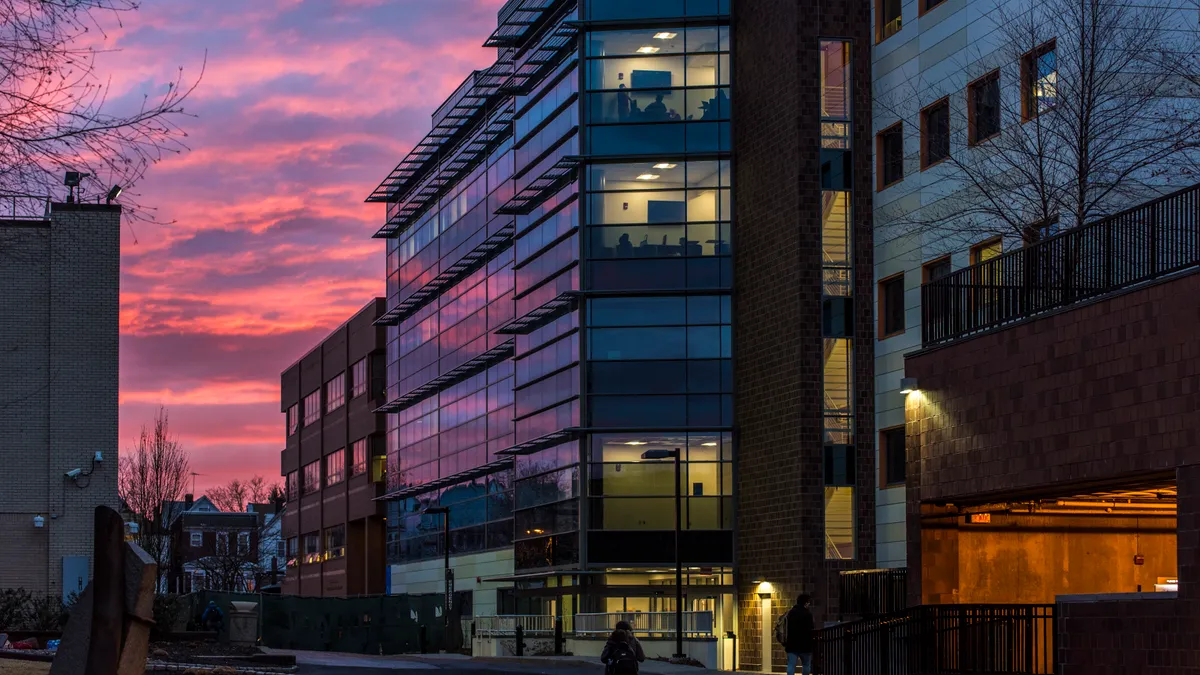Sue Henderson is the president of New Jersey City University.
Urban universities have a special relationship with the cities we call home. Unlike rural or even suburban campuses, we are not islands unto ourselves but woven over time into the fabric of neighborhoods, a physical and spiritual symbiosis of place.
As active community citizens, city universities are engaged in local issues, both as private residents and the sum of them, as institutions. Very often, we shape the defining characteristics of our built environment, providing the cultural, recreational and intellectual essence of where we live.
New Jersey City University (NJCU) and other urban universities like it derive much from the cities in their midst. Local businesses provide jobs and internships for our students as well as support our academic, athletic and cultural programs. Many students look to the city for housing and for a range of recreational activities. And we take advantage of local shops and eateries as well as the many services that city government provides.
As much as we receive, we also have an obligation to contribute, to leverage our resources and direct our vision in ways that enhance the city's quality of life. It's part and parcel of our commitment to social responsibility. As America's cities struggle with a range of challenges — crime and poverty, housing, stagnant economic development, cultural deserts — urban universities can work to become part of the solution, even as we focus on the needs of our students.
Almost two decades ago, NJCU set out on a path that went beyond our own needs and ambitions. While we recognized the imperative of growing our West Side footprint — a part of the city that was not experiencing the corporate boon along the Hudson riverfront to the east — we did not take on these growth plans with an entirely inward focus. Rather, the university engaged both the city and private developers to develop a symbiotic plan that would help the city address some of its more pressing issues.
Years of collective thinking and planning ultimately led to the creation of University Place, a 21-acre mixed-use development that is already on its way to becoming an innovative and versatile resource for both NJCU and the community as a whole. The academic village not only provides much-needed student housing, but importantly, market-rate apartments for local residents who are not enrolled in the university.
With real estate prices and rents skyrocketing in red-hot Jersey City over the past few years, our public-private partnership (P3) has been able to help ease the burden on city residents by building modern, amenity-rich apartments with competitive monthly rents. And not incidentally, because of the structure of this partnership, we are doing so without burdening our students with the costs. When it is complete, University Place will feature five residential buildings, constructed amid a tree-lined, brick-paved boulevard and a public plaza large enough to host outdoor concerts and other community events.
"As much as we receive, we also have an obligation to contribute, to leverage our resources and direct our vision in ways that enhance the city's quality of life. It's part and parcel of our commitment to social responsibility."

Our commitment to Jersey City will not stop there. University Place is designed to tackle other abiding issues in our part of the city. As part of the development, for example, we are exploring retail opportunities that will help address the lack of a nearby major grocery store in what is today an urban food desert. With a mix of other retail on the ground floor of the apartments, the district should become a vibrant mixed-use development.
The P3 structure of the development also provides for the construction of the project's crown jewel, the university's Center for Music, Dance and Theater, a performance hall that will be accessible to students and city residents alike. And here's the particularly exciting part: The performing arts center is being paid for entirely by the private developers who are leveraging the rent and lease payments from the residential-retail halls.
That means the cost of development will fall neither on the backs of our students — 70% of whom are eligible for federal Pell grants — nor on taxpayers. In return, we have a new performing arts classroom for our students as well as a new performance hall for the Jersey City community. The upshot not only represents P3 at its best, but social responsibility at its best as well.
Our collective pride in all that University Place is becoming has less to do with the physical transformation of 21 acres of what was once a chromium-laden factory site into a vibrant live-work-play district. What we are most proud of is the undercurrent of social responsibility that has driven this project.
From the outset, we assumed a posture of collaboration with the city, and we have worked hand in glove with local leaders to ensure that NJCU is helping solve local challenges and contributing to the quality of life that all of us enjoy. It's a commitment to social responsibility — to our city, our community and our students — that only an urban university can make.

















